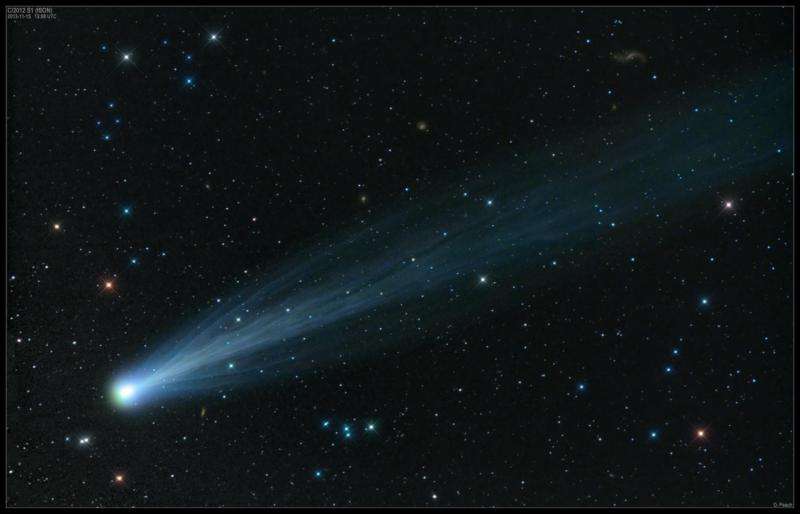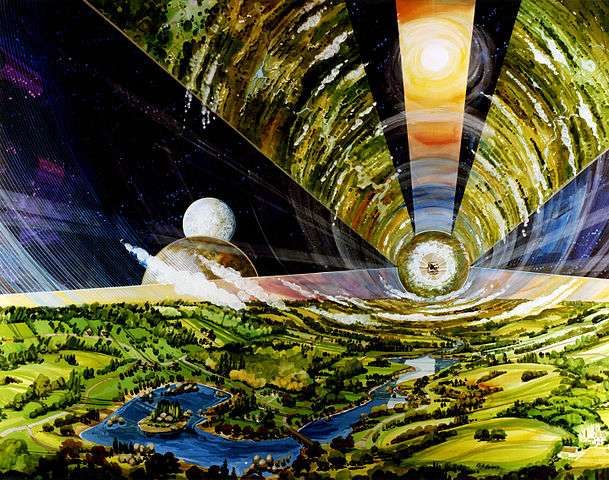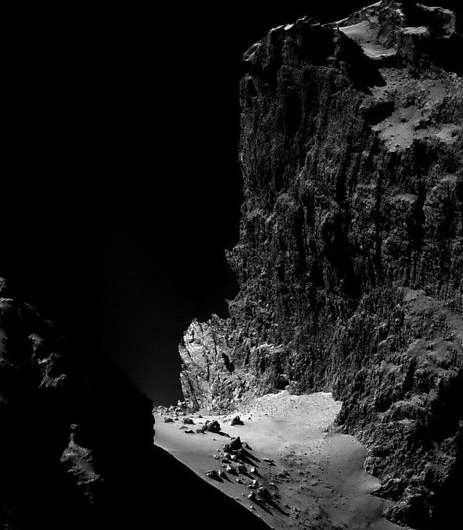Carl Sagan's bonkers idea—life inside a comet

Establishing a sustained human presence somewhere other than Earth is a vital part of humanity's future, no matter what. We know that Earth won't last forever. We don't know exactly which one of the many threats that Earth faces will ultimately extinguish life here, but life will be extinguished completely at some future point.
Colonizing moons or planets is one way to do it. But that's really hard. We may make it to Mars before too long, but we don't know how successful we'll be at establishing a presence there. There are an awful lot of 'ifs' when it comes to Mars.
The only other option is space habitats. That makes sense; there's much more space out there than there is surface area on planets and moons. And space habitats have been on the minds of thinkers, writers, and scientists for a long time.
Gerard K. O'Neill is probably the most well-known thinker when it comes to space habitats. In 1977 he published the seminal book on space habitats, called "The High Frontier: Human Colonies in Space." O'Neill in his time popularized what is now called the "O'Neill Cylinder."
The O'Neill Cylinder
The O'Neill Cylinder lay the groundwork for space habitat design. It consisted of two counter-rotating cylinders, one nested inside the other. The counter-rotation provided stability and gravity. The atmosphere would be controlled, and the habitat would be powered by solar, and perhaps fusion.
The McKendree Cylinder
Other designs from other people followed O'Neill's. Notable among them is the McKendree Cylinder. The McKendree would be gargantuan compared to the O'Neill Cylinder. Thanks to carbon nanotubes, it would have more surface area than the United States. It was designed by NASA Engineer Tom McKendree and introduced in the year 2,000 at the NASA "Turning Goals into Reality Conference."
There've been other ideas for massive, high-tech space habitats, including the Bernal Sphere and the Stanford Torus. All of these designs are typical of engineers and technologists. Lots of high-tech, lots of steel, lots of machinery. But the engineers and scientists behind those designs weren't the only ones thinking about humans in space.
Carl Sagan was too. And he had a very different idea of what space habitats could be.

So Crazy It Just Might Work
But the craziest idea for space habitats has got to be Carl Sagan's, from his 1985 book "Comet."In "Comet" Sagan suggested that humans could seek refuge in, and even colonize, actual comets travelling through our solar system. Using all the advanced technologies thought about in Sagan's time—but which don't exist yet—comets could be transformed into humanity's salvation. His idea is a world apart from the high-tech, highly-engineered, gleaming habitat designs that most people think of when they think of space habitats.
I'm a fan of Sagan's. Like many in my generation, I was influenced by his TV series Cosmos. I loved it and it's stuck with me. His book "The Demon-Haunted World" taught us what scientific skepticism can be, and how useful it is.
Sagan's is the most surprising—and perhaps bleakest—view of space habitats. Life inside comets sounds shocking, and maybe even foolish, but as Sagan explains, there is some reasoning behind the idea.
Remember that when Sagan wrote about this, thermonuclear war between the superpowers was a "thing," and thinkers like Sagan felt a sense of imminent danger. That sense of foreboding may have contributed to his "comets-as-space-habitas" idea. Plus, he was just an innovative thinker.

Sagan's thinking behind using comets as space habitats starts out something like this: if there are about a hundred thousand comets crossing Earth's orbit, and another hundred trillion in the Oort Cloud, their combined surface area is roughly equal to about a hundred million Earths. And with advanced technology, Sagan proposed that these comets could be captured and colonized and sent on orbits and trajectories desirable to humans.
Comets are rich in minerals, water ice, and biological compounds. Or so it was thought at the time. That means raw material for manufacturing, water to drink and to supply oxygen, biological compounds for bio-engineering, and even the raw material for rocket fuel. Add a fusion reactor for power, and
comets could end up being the convenience stores of the solar system.
Physicist Freeman Dyson, an innovative thinker himself, had something to add to Sagan's comet idea. In "Comet," Sagan tells of Dyson's ideas around genetic engineering, and that one day we should be able to engineer forms of life that could thrive on comets, and meet some of our needs. Dyson talks about a giant, genetically engineered tree that could grow on a comet, planted in snow rich in organic chemicals. The tree would supply us with fresh oxygen.
This sounds extremely far-fetched: humans living inside comets travelling through space, with giant genetically engineered trees and fusion power plants. I try to remind myself that many things we take for granted now were once thought to be laughable. But even though parts of the comet-as-space-habitat idea sound fanciful—like the giant tree—there may be the seed of a practical idea here, with humans hitching rides on comets, molding them to our purposes, and extracting resources like minerals and fuel from them.

Sagan was an agile creative thinker. He's clearly riffing when he outlines his ideas for life on comets. He's like the John Coltrane of space science.
It seems doubtful that we would go to the trouble to turn comets into actual habitats. It's probably more science fiction that science. But the future is unwritten, and given enough time, almost anything might be possible.
Source: Universe Today




















